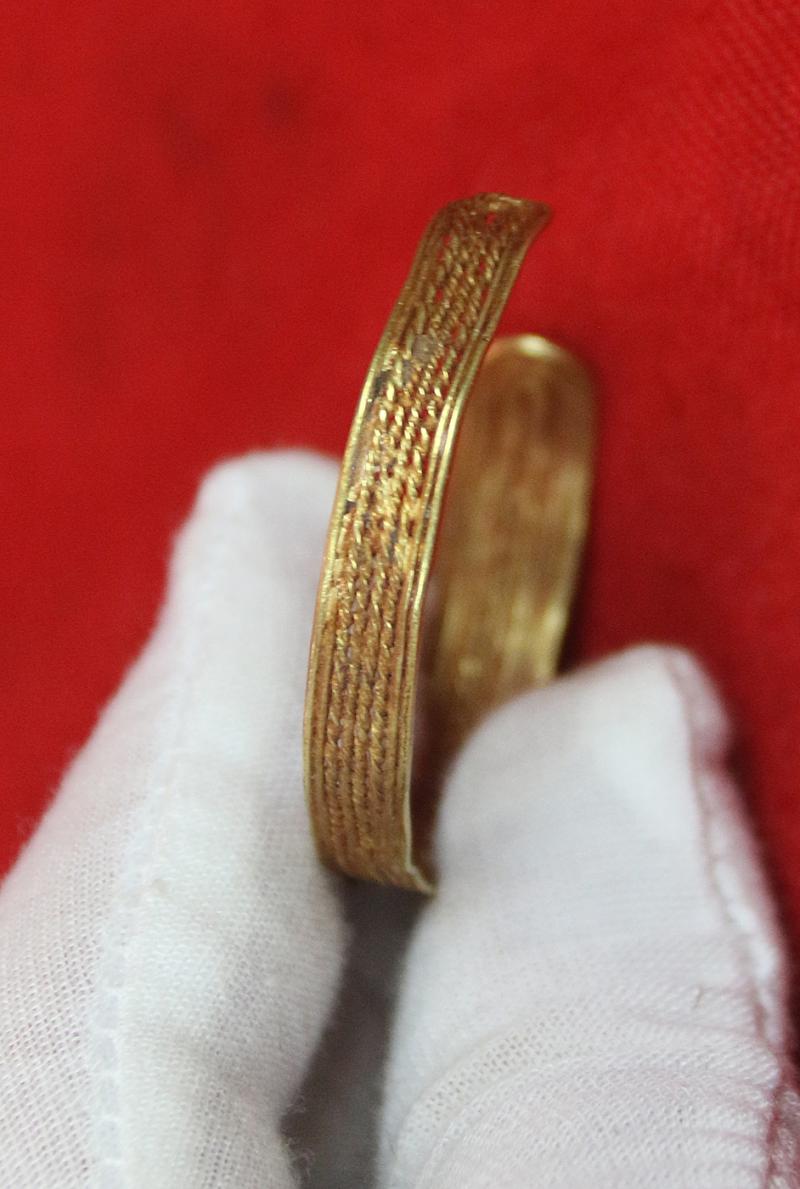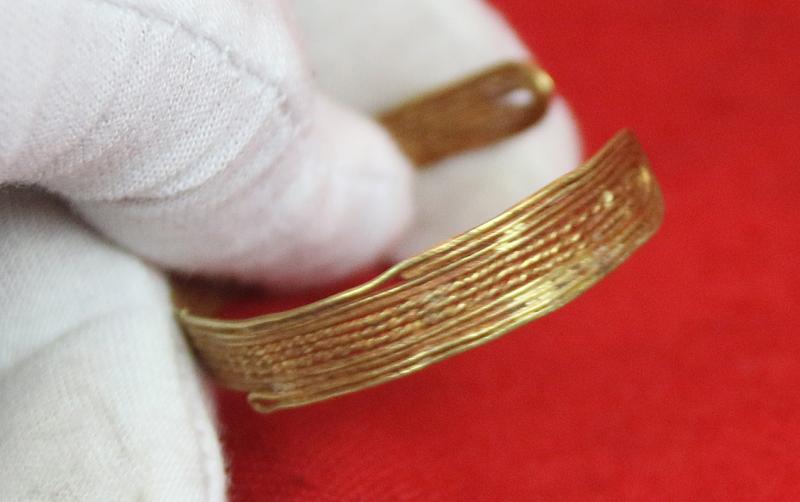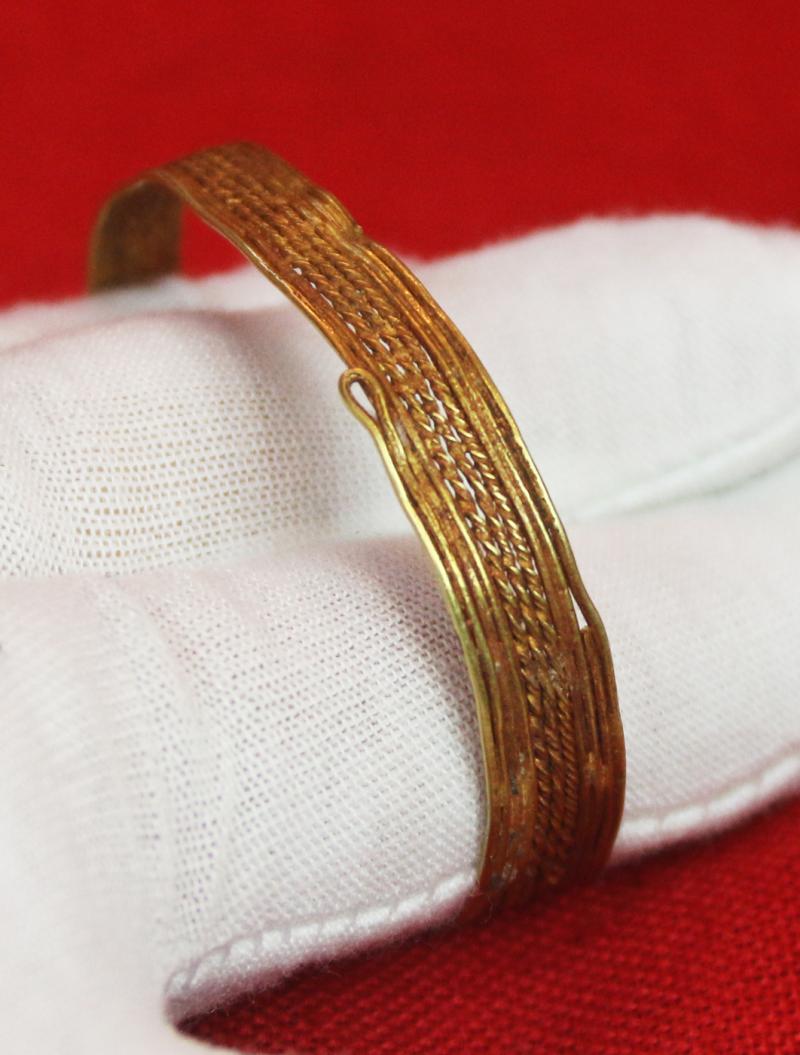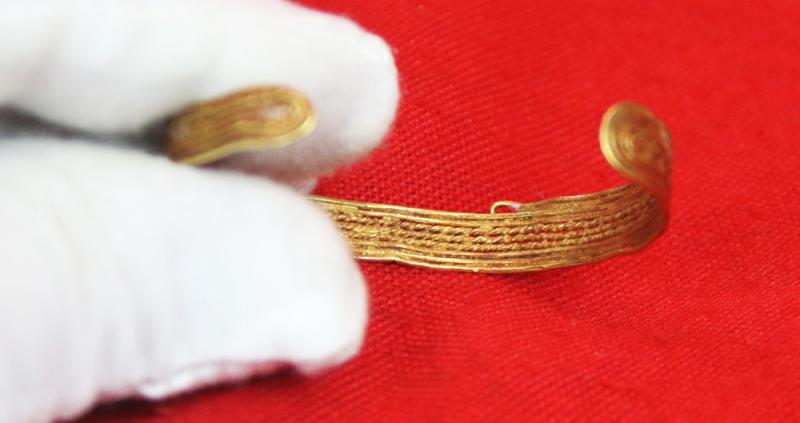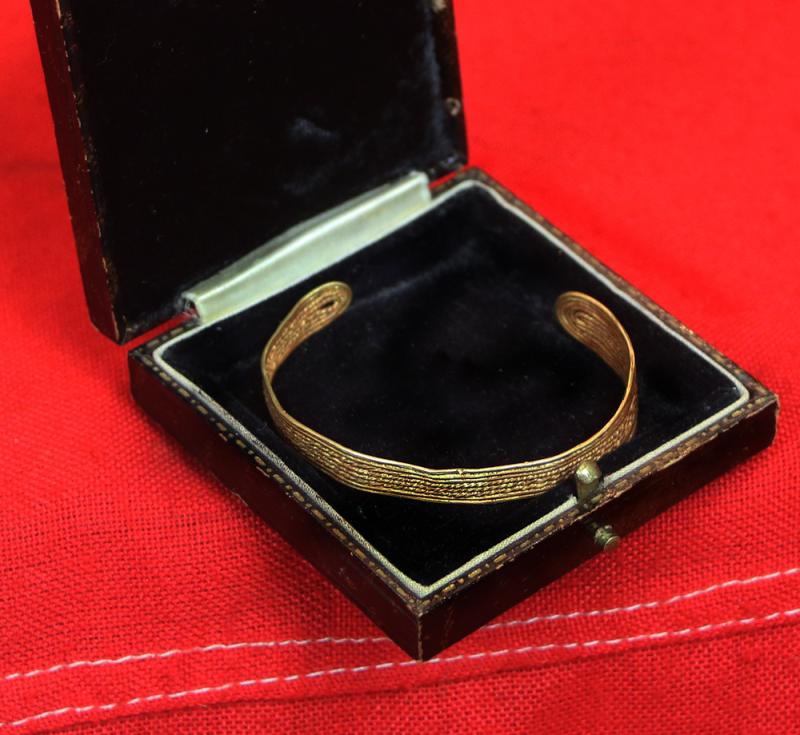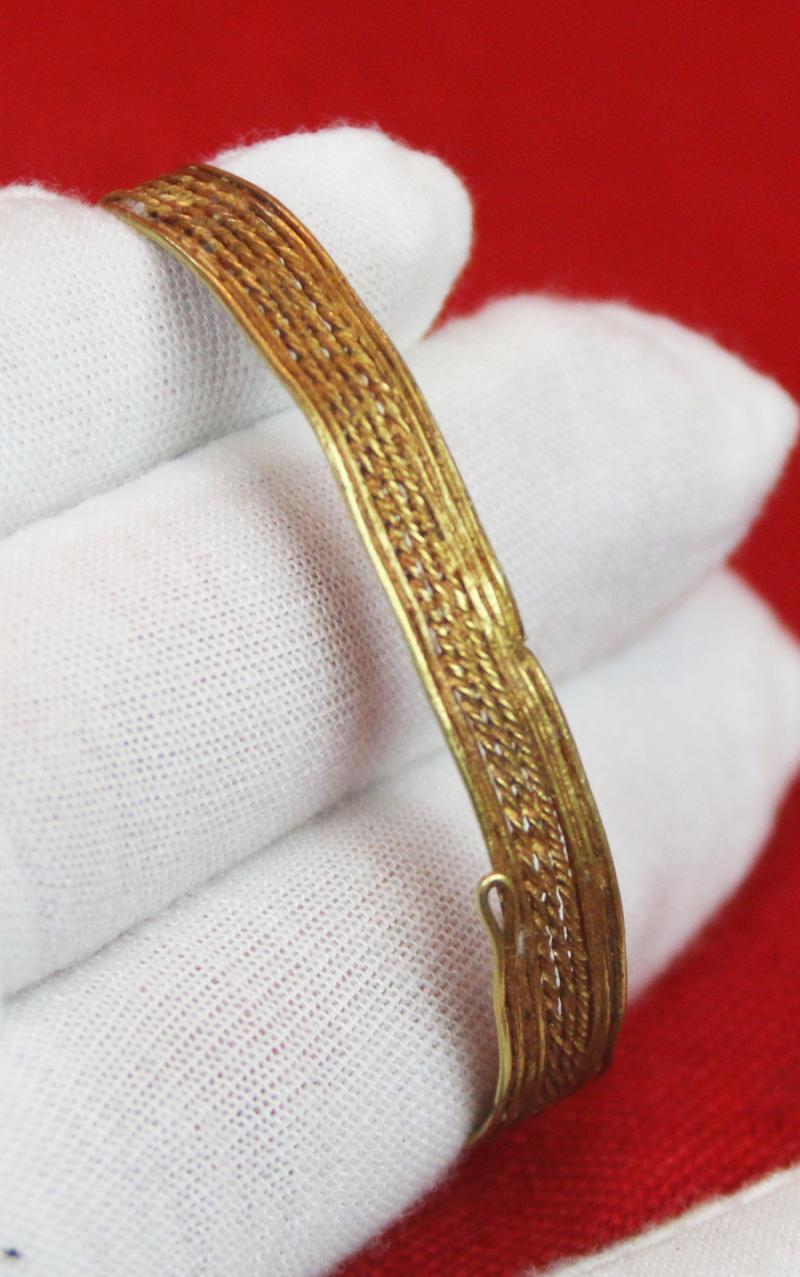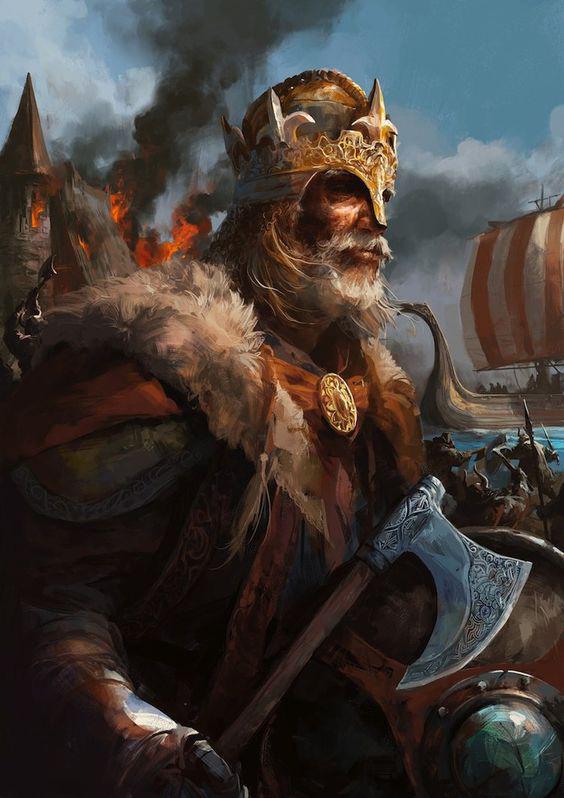A Simply Breathtaking Original Viking High Carat Fine Gold Bracelet, Most Likely By An Irish Master Goldsmith, In Twisted Gold Wirework That The Irish Goldworkers Were Most Famed, From The 1st Millenia BC to The Viking Era, Circa 10th Century
Composed of twisted gold wirework upon gold wire coils. The only place one can normally only see such a beautiful masterpiece would be in a National Museum Collection in Ireland, Britain or Scandinavia, yet to own such a unique piece could be such a joy for the admirer of original Viking historical artistry, and especially, by a likely Irish master craftsman.
Since the Vikings were famed for their constant renegade raiding and looting – it was paramount that Viking kings earls, lords and warriors cemented their alliances. One way to show bonds of loyalty was through the exchange of rings. Kings and Lords, who held most of the wealth, gifted rings or arm bracelets of precious metals to warriors as a means of redistributing treasure and giving thanks. Some might say a most ironic practice, that of using the invasion, pillage and raiding of others, in order to promote peace and prosperity for their own.
If you’ve ever read Beowulf, you know that dragons were among the mythical creatures most despised by the tribes of Northern Europe. Apart from breathing fire, dragons also represented a self-destructive force inherent in tribal culture. Dragons hoard treasure in dungeons and caverns far removed from villages and cities. For the Vikings, along with other Northern tribes, wealth was best served as a means for building communities. Lords who gifted treasure gained alliances, and thereby strengthened their own ranks. The distribution of wealth meant larger, safer, more vibrant populations. Lords who hoarded wealth like dragons weakened necessary social structures, and essentially rendered their wealth useless.
Gold jewelry was always reserved for the Viking elite, as a symbol of great wealth and power..
The Vikings smelted all sorts of looted art pieces and jewelry from their hoards. Worn by both men and women, Viking jewelry was mostly made of silver or bronze, with gold jewelry often reserved for the elite. Women wore brooches that fastened their clothes together, as well as necklaces. Men, on the other hand, wore rings and armlets. The rings were not limited to fingers, but also worn about the wrists, arms, and neck. Warriors also adorned their weapons, especially the sword hilt.
The Vikings acquired wealth in a few ways. Firstly, they were traders. Viking coins and runes have made it to many ends of the earth. Eventually, the Vikings realised that precious metals, along with other luxury goods, could be more easily acquired by raiding the monasteries of Britain, Ireland and Northern Europe. At the time, Viking ships were fast and coastal British monasteries were isolated and poorly defended. The Viking “reign of terror” is generally agreed to have begun in 793 after a raid on England’s Lindisfarne monastery. Archaeologist Colleen Batey of the Glasgow Museums wryly notes that the Vikings “had a preference for anything that looked pretty.” Eventually, the Vikings settled in many of these areas, choosing to colonize rather than extort their southern neighbours.
It has been observed that Viking Age gold finds in Scandinavia and Britain, especially Ireland are frequently associated with watery environments and may represent ritual or votive depositions. There is also evidence, literary and archaeological, for the ritual deposition of some silver hoards in the Viking world. This considers the evidence of those Viking Age gold and silver hoards and single finds from Ireland that derive from watery locations, including Irish crannogs and their environs. It is noted that all recorded gold hoards, with one exception, have an apparent association with water or watery places and thus conform to the patterns noted elsewhere. As with all our items it comes complete with our certificate of authenticity.
50mm, 5.88 gms
Code: 24778
12995.00 GBP

